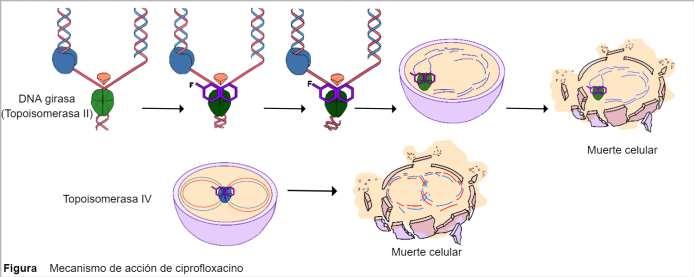
3 minute read
FDAU-29 USO DEL ÁCIDO HIALURÓNICO EN OSTEOARTRITIS
22 al 26 de noviembre
FDAU-29 USO DEL ÁCIDO HIALURÓNICO EN OSTEOARTRITIS
Advertisement
Borrego, P1; Arguello, CS2; Ramírez, A3; Mancha, J.4
RESUMEN
INTRODUCCIÓN. PRESENTACIÓN DEL CASO CLÍNICO
• Antecedentes de Importancia Mujer, 58 años. Diabetes tipo II. Presenta dolor no traumático en rodilla derecha: 12 meses de evolución con rigidez matutina. Peso 102.5 kg, talla 1.80 mts, deambula claudicando por dolor. Rodilla derecha en genu varo, aumento de volumen y derrame articular. • Estudios diagnostico Radiografía AP y Lateral rodilla derecha • Diagnóstico Osteoartritis de segundo grado en rodilla derecha, con disminución de espacio articular en articulación femoropatelar y osteofitos. • Tratamiento y Evolución Visco suplementación con ácido hialurónico (3 ampolletas, 2 ml c/u), intraarticular: un solo procedimiento. Mejoría en pocos meses.
JUSTIFICACIÓN DEL TRATAMIENTO UTILIZADO
El ácido hialurónico suprime citocinas proinflamatorias, metaloproteinasas en matriz, prostaglandinas y óxido nítrico; mejora la función articular, reduce rigidez y dolor en pacientes con osteoartritis de rodilla, lubricante de cartílago articular. Por vía intraarticular es más eficiente: evita exposición sistémica y posibles efectos secundarios.
CONSIDERACIONES ÉTICAS
La protección del paciente cumple con los principios de la Declaración de Helsinki, y de la Ley General de Salud Mexicana. Fue informada acerca de su padecimiento y otorgó el consentimiento informado siguiendo las bases de la NORMA Oficial Mexicana NOM-004-SSA3- 2012.
DISCUSIÓN DEL MECANISMO DE ACCIÓN DEL FÁRMACO
El ácido hialurónico se unen como hialuronano a los receptores de CD44 y TLR tras la organización de agrecanos, ejerce: inhibición de expresión de citoquinas, prostaglandinas (PGE2) y células proinflamatorias (IL-1), producción de radicales libres responsables de la apoptosis, atenúa actividad fibrinolítica mediada por sistema factor activador del plasminógeno tipo urocinasa y su receptor (u-PA/u- PAR), disminuye los valores de NO inhibiendo síntesis del mismo y modula síntesis de HA endógeno por estimulación de la AH sintasa.
CONCLUSIÓN
El ácido hialurónico es una gran alternativa para el paciente con osteoartrosis dado su mecanismo de acción y beneficios, por lo que no se descarta a futuro la posibilidad de ser el tratamiento de primera elección para esta patología.
ABSTRACT INTRODUCTION
Woman, 58 years old. Diabetes type II: 10 years of evolution, treated with metformin. Presents non traumatic pain in right knee of 12 months of evolution and mild morning stiffness. Weight 225. 9 pounds and size 5.90 fts, walks with a limb. Right knee with genu varus, volume increase and articular leak.
22 al 26 de noviembre
• Diagnostic tests AP and lateral radiographs of right knee. • Diagnosis Osteoarthritis of right knee, second grade ranking . • Treatment and follow-up Viscosupplementation with hyaluronic acid (3 vials 2 ml each one), intraarticular in the same process.
SUBSTANTIATION OF THE USED TREATMENT
High molecular weight hyaluronic acid has anti-inflammatory effects within the synovial fluid by suppressing the expression of pro-inflammatory cytokines, matrix metalloproteinases, prostaglandins, and nitric oxide. IA administration is more effective: it avoids systemic exposure and adverse side effects, it works by improving joint function, reducing stiffness and pain in patients with knee OA: articular cartilage lubrication, antioxidative, analgesic, immunomodulatory, chondroprotective, prevents external cellular matrix degradation, cartilage repair effects and antiOA effects by interacting with receptors, enzymes, and other biomolecules.
ETHICAL CONSIDERATIONS
The protection of the rights, safety and well-being of the patient during the follow-up of the case complies with the principles of the Declaration of Helsinki, and of the Mexican General Health Law. The patient was duly informed about her illness and gave informed consent following the bases of the Official Mexican norm: NORMA NOM-004-SSA3-2012.
DISCUSSION OF THE DRUG´S MECHANISM OF ACTION
Both exogenous and endogenous hyaluronic acid binds in the form of hyaluronan to the membrane receptors CD44 and TLR after the organization of aggrecans, exerts these tasks as: inhibition of expression of cytokines, prostaglandins (PGE2) and proinflammatory cells (IL-1 ), production of free radicals responsible for apoptosis, attenuates fibrinolytic activity mediated by urokinase-type plasminogen activator factor system and its receptor (u-PA/u-PAR), decreases NO values by inhibiting its synthesis and modulates the synthesis of endogenous HA by stimulation of AH synthase.
CONCLUSION
In recent years, it has been shown and published in various scientific sources that the use of hyaluronic acid is a great alternative for patients with osteoarthritis, given its mechanism of action and benefits.










